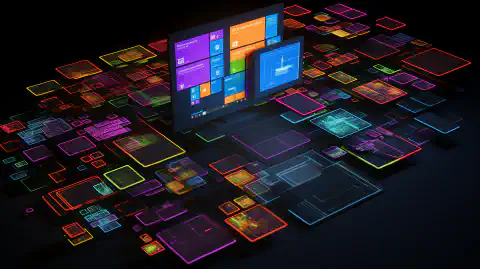2024 Cybersecurity Threats: Expert Insights and Recommendations

Table of Contents
Cybersecurity Threats to Watch Out for in 2024: Expert Insights and Recommendations
As we move into 2024 , the threat landscape for cybersecurity continues to evolve and become more complex. In this article, we will explore some of the top cybersecurity threats that businesses and individuals should be aware of, as well as expert insights and recommendations on how to stay safe.
1. Ransomware Attacks
Ransomware attacks have become increasingly common over the past few years and are expected to continue in 2024. Ransomware is a type of malicious software that encrypts a victim’s data and demands payment in exchange for the decryption key. These attacks can be devastating for businesses, as they can lead to data loss, downtime, and reputational damage.
Prevention
To prevent ransomware attacks, it is important to take the following steps:
Backup your data regularly and securely. Having regular backups of your important data can help you recover from a ransomware attack without having to pay the ransom. Make sure to store your backups securely, such as in the cloud or on an external hard drive that is not connected to your network.
Keep your software up-to-date with the latest security patches. Software vulnerabilities can be exploited by attackers to gain access to your network and deploy ransomware. Keeping your software up-to-date with the latest security patches can help prevent these vulnerabilities from being exploited.
Train your employees on how to recognize and avoid phishing emails. Phishing emails are a common method used by attackers to deliver ransomware. Training your employees on how to recognize and avoid phishing emails can help prevent them from inadvertently downloading and running ransomware.
Use strong passwords and multi-factor authentication to protect your accounts. Strong passwords and multi-factor authentication can help prevent attackers from gaining access to your accounts, which can be used to deploy ransomware or steal sensitive data.
Consider using a reputable cybersecurity solution that can help detect and prevent ransomware attacks. A reputable cybersecurity solution can help detect and prevent ransomware attacks before they can cause damage. This can include solutions such as antivirus software, firewalls, and intrusion detection systems.
2. Phishing Scams
Phishing scams continue to be a popular way for cybercriminals to steal sensitive information. In a phishing scam, a cybercriminal sends an email or message that appears to be from a legitimate source, such as a bank or an employer, and asks the recipient to provide sensitive information, such as login credentials or credit card numbers.
Prevention
To protect yourself from phishing scams, it is important to take the following steps:
Be cautious of any unsolicited emails or messages. If you receive an email or message that you were not expecting, be cautious and do not provide any sensitive information until you have verified the legitimacy of the request.
Check the sender’s email address or domain to make sure it is legitimate. Phishing emails often use fake email addresses or domains that are designed to look like a legitimate source. Check the email address or domain to make sure it is legitimate before responding to any requests.
Do not click on any links or download any attachments from unsolicited emails or messages. Links and attachments in phishing emails can be used to deliver malware or direct you to a fake website that looks legitimate but is designed to steal your information. Be cautious and do not click on any links or download any attachments from unsolicited emails or messages.
Use multi-factor authentication to protect your accounts. Multi-factor authentication can provide an extra layer of security to your accounts by requiring a second form of authentication, such as a code sent to your phone, in addition to your password. This can help prevent attackers from gaining access to your accounts, even if they have obtained your password through a phishing scam.
3. Internet of Things (IoT) Security
As more devices become connected to the internet, the security risks associated with the Internet of Things (IoT) are increasing. Hackers can use IoT devices, such as smart thermostats and security cameras, to gain access to networks and steal sensitive data.
Prevention
To protect yourself from IoT security threats, it is important to take the following steps:
Change the default usernames and passwords on all IoT devices. Many IoT devices come with default usernames and passwords that are easy for attackers to guess. Changing these credentials can help prevent unauthorized access to your devices and network.
Keep all software and firmware up-to-date. Like any other device that connects to the internet, IoT devices can have vulnerabilities that can be exploited by attackers. Keeping your devices up-to-date with the latest software and firmware updates can help address these vulnerabilities and improve the security of your devices.
Limit the amount of personal information that you share with IoT devices. Many IoT devices require you to provide personal information, such as your name and address, in order to function properly. Be cautious about the amount of personal information that you share and only provide the minimum amount of information necessary for the device to function.
Use a separate network for IoT devices to keep them isolated from your main network. By keeping your IoT devices on a separate network, you can limit the access that they have to other devices on your main network. This can help prevent attackers from using IoT devices as a gateway to gain access to other devices on your network.
4. Insider Threats
Insider threats are security risks that come from within an organization, such as employees or contractors who have access to sensitive information. These threats can be intentional, such as an employee stealing data for personal gain, or unintentional, such as an employee accidentally sending sensitive information to the wrong person.
Prevention
To prevent insider threats, it is important to take the following steps:
Implement access controls to limit the amount of data that employees can access. Limiting the amount of data that employees can access can help prevent them from accessing sensitive information that they do not need to do their job.
Conduct background checks on all employees and contractors. Conducting background checks can help identify any potential red flags, such as criminal history or financial issues, that may make an employee or contractor a security risk.
Train employees on how to recognize and report potential security threats. Training employees on how to recognize and report potential security threats can help prevent them from accidentally or intentionally causing a security breach. This can include training on how to recognize phishing emails, how to handle sensitive information, and how to report suspicious behavior.
Use data loss prevention (DLP) technology to monitor and prevent sensitive data from leaving your organization. DLP technology can help prevent sensitive data from being accidentally or intentionally leaked by employees or contractors. This can include monitoring email and file transfers for sensitive information and preventing data from being sent to unauthorized locations.
5. Cloud Security
As more businesses move their data and applications to the cloud, the security risks associated with cloud computing are becoming more prevalent. Cloud providers have a responsibility to secure their infrastructure, but businesses also need to take steps to ensure the security of their own data and applications.
Prevention
To protect your data in the cloud, it is important to take the following steps:
Choose a reputable cloud provider that has a strong track record of security. When choosing a cloud provider, it is important to research their security practices and ensure that they have a strong track record of security. Look for cloud providers that have certifications, such as ISO 27001 or SOC 2, which demonstrate that they meet certain security standards.
Encrypt all sensitive data before uploading it to the cloud. Encrypting sensitive data can help prevent unauthorized access to your data in the event of a security breach. Use strong encryption methods, such as AES-256, to encrypt your data before uploading it to the cloud.
Use multi-factor authentication to protect your accounts. Multi-factor authentication can provide an extra layer of security to your accounts by requiring a second form of authentication, such as a code sent to your phone, in addition to your password. This can help prevent attackers from gaining access to your accounts, even if they have obtained your password through a security breach.
Regularly monitor your cloud environment for security issues. Regularly monitoring your cloud environment for security issues, such as unauthorized access or data leaks, can help you detect and respond to security incidents in a timely manner. Use cloud security tools, such as intrusion detection systems and security information and event management (SIEM) tools, to monitor your cloud environment for security issues.
Conclusion
In conclusion, the cybersecurity threat landscape in 2024 is ever-evolving and poses significant risks to individuals and businesses alike. It is essential to stay vigilant and take proactive measures to protect against potential threats, such as ransomware attacks, phishing scams, IoT security risks, insider threats, and cloud security vulnerabilities. By following the expert insights and recommendations provided in this article, individuals and businesses can take significant steps towards improving their cybersecurity posture and protecting their valuable data and information. These measures include regular data backups, keeping software up-to-date, training employees, implementing access controls, conducting background checks, and using reputable cybersecurity solutions. Staying informed and taking action can help to mitigate the risk of cybersecurity threats and keep you and your business safe in 2024 and beyond.






